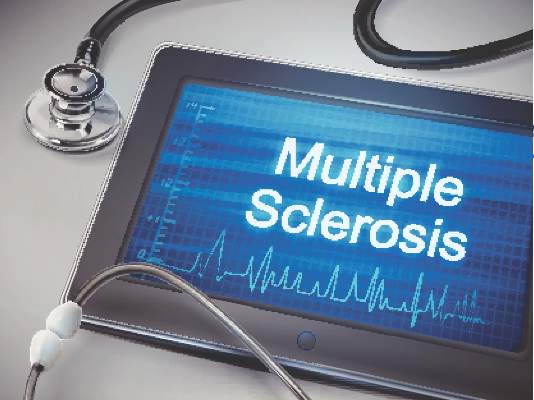User login
The morphology of brain lesions can provide strong clues for differentiating patients with multiple sclerosis (MS) with cavitary lesions from patients with vanishing white matter disease (VWMD), suggests a cross-sectional study conducted in France.
The study comprised 14 patients with MS with cavitary lesions and 14 patients with VWMD. Two neuroradiologists reviewed brain MRI scans for the patients.
All of the patients with MS had ovoid lesions perpendicular to the lateral ventricles and half of such patients had isolated juxtacortical lesions. None of the VWMD patients had either of those types of lesions.
Another of the neuroradiologists’ findings was that 58% of the VWMD patients had symmetrical hyperintensities in the infratentorial region of the brain, mainly involving the middle cerebellar peduncle and cerebellar white matter, while symmetrical hyperintensities were absent from that part of the brain in MS patients.
Other statistically significant differences between the brains of the two groups were the percentages of each group that had hyperintensities located in the midbrain and thalamus. Both were found in more than 70% of MS patients. In contrast, midbrain and thalamus hyperintensities were found in 29% and 7% of the VWMD patients, respectively.
While it is difficult to distinguish MS with cavitary lesions from VWMD, this study “clearly shows some MRI characteristics that seems to be specific and thus help to differentiate these two disorders,” wrote Xavier Ayrignac and his colleagues.
Read the study in the European Journal of Neurology (doi: 10.111/ene.12931).
The morphology of brain lesions can provide strong clues for differentiating patients with multiple sclerosis (MS) with cavitary lesions from patients with vanishing white matter disease (VWMD), suggests a cross-sectional study conducted in France.
The study comprised 14 patients with MS with cavitary lesions and 14 patients with VWMD. Two neuroradiologists reviewed brain MRI scans for the patients.
All of the patients with MS had ovoid lesions perpendicular to the lateral ventricles and half of such patients had isolated juxtacortical lesions. None of the VWMD patients had either of those types of lesions.
Another of the neuroradiologists’ findings was that 58% of the VWMD patients had symmetrical hyperintensities in the infratentorial region of the brain, mainly involving the middle cerebellar peduncle and cerebellar white matter, while symmetrical hyperintensities were absent from that part of the brain in MS patients.
Other statistically significant differences between the brains of the two groups were the percentages of each group that had hyperintensities located in the midbrain and thalamus. Both were found in more than 70% of MS patients. In contrast, midbrain and thalamus hyperintensities were found in 29% and 7% of the VWMD patients, respectively.
While it is difficult to distinguish MS with cavitary lesions from VWMD, this study “clearly shows some MRI characteristics that seems to be specific and thus help to differentiate these two disorders,” wrote Xavier Ayrignac and his colleagues.
Read the study in the European Journal of Neurology (doi: 10.111/ene.12931).
The morphology of brain lesions can provide strong clues for differentiating patients with multiple sclerosis (MS) with cavitary lesions from patients with vanishing white matter disease (VWMD), suggests a cross-sectional study conducted in France.
The study comprised 14 patients with MS with cavitary lesions and 14 patients with VWMD. Two neuroradiologists reviewed brain MRI scans for the patients.
All of the patients with MS had ovoid lesions perpendicular to the lateral ventricles and half of such patients had isolated juxtacortical lesions. None of the VWMD patients had either of those types of lesions.
Another of the neuroradiologists’ findings was that 58% of the VWMD patients had symmetrical hyperintensities in the infratentorial region of the brain, mainly involving the middle cerebellar peduncle and cerebellar white matter, while symmetrical hyperintensities were absent from that part of the brain in MS patients.
Other statistically significant differences between the brains of the two groups were the percentages of each group that had hyperintensities located in the midbrain and thalamus. Both were found in more than 70% of MS patients. In contrast, midbrain and thalamus hyperintensities were found in 29% and 7% of the VWMD patients, respectively.
While it is difficult to distinguish MS with cavitary lesions from VWMD, this study “clearly shows some MRI characteristics that seems to be specific and thus help to differentiate these two disorders,” wrote Xavier Ayrignac and his colleagues.
Read the study in the European Journal of Neurology (doi: 10.111/ene.12931).
FROM EUROPEAN JOURNAL OF NEUROLOGY

